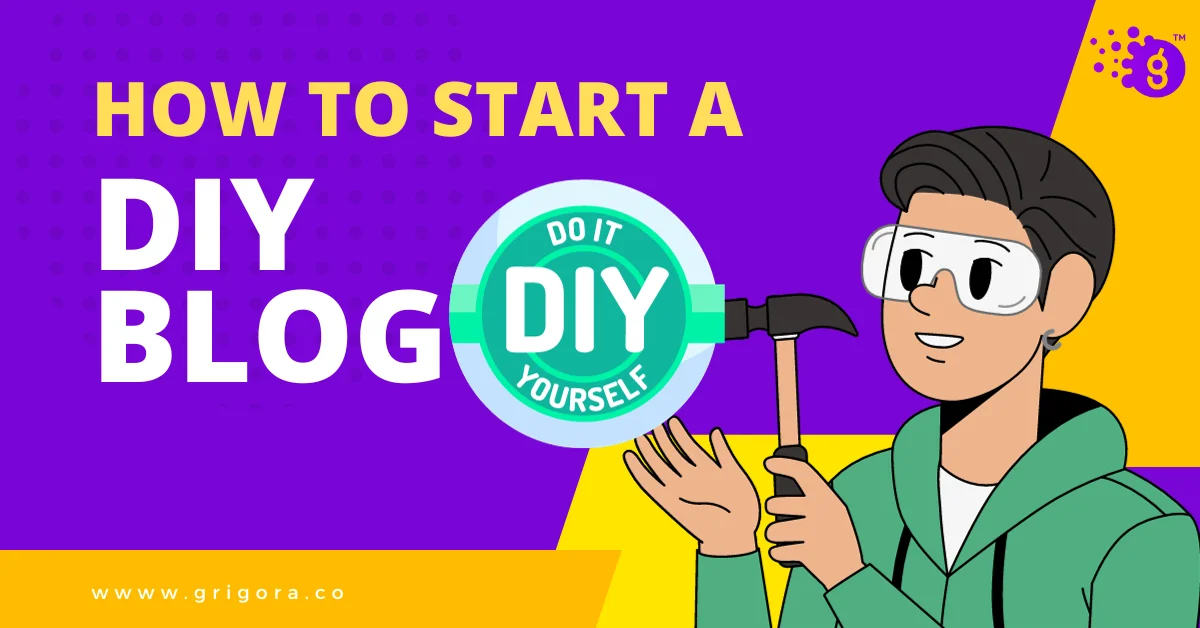Introduction
"The only limit to your DIY project is your imagination."
The Popularity and Impact of DIY Blogs
DIY blogs have surged in popularity over the last few years, becoming a go-to resource for millions of people looking to tackle projects on their own. These blogs offer a wealth of information, from home improvement and decor to crafts and sewing. The impact is twofold: they empower individuals to create something new and offer a sense of community among like-minded DIY enthusiasts.
Why Starting a DIY Blog Can Be Both Rewarding and Profitable
Starting a DIY blog is not just a way to share your creative projects; it's also a viable path to generating income. With the right strategies, such as affiliate marketing and sponsored posts, your blog can become profitable. Moreover, the sense of fulfillment that comes from teaching others and sharing your passion is immeasurable.
Choosing a Blogging Platform
WordPress, Blogger, and Other Options
Selecting the right blogging platform is a pivotal step in your blogging journey. While WordPress and Blogger are popular choices, each comes with its own set of pros and cons. Your choice should align with your technical skills, customization needs, and the type of audience you aim to attract.
Why Grigora is an Ideal Choice for DIY Blogs
Grigora offers a user-friendly interface, robust security measures, and a wide range of customization options, making it an excellent choice for DIY bloggers. Its features are designed to simplify blog management and enhance user experience, allowing you to focus more on creating quality content.
Blog Design and Layout
Choosing a Theme that Complements the DIY Aesthetic
When it comes to setting up a DIY blog, the visual aspect plays a significant role in capturing your audience's attention. The theme you select should be a visual representation of what your blog stands for. If you're focusing on home improvement, perhaps a clean, modern layout would work best. For craft-oriented blogs, a more playful and colorful theme might be more appropriate. The key is to choose a theme that not only looks good but also aligns with the content you plan to produce.
User-friendly Navigation and Accessibility
Your blog's layout isn't just about aesthetics; it's also about functionality. The user experience is paramount. Make sure your blog is easy to navigate with a well-organized menu, clear categories, and a search function. Accessibility features like text-to-speech and easy font readability can make your blog more inclusive. Remember, a user-friendly design can significantly reduce bounce rates and increase the time spent on your site, which is beneficial for SEO.
Essential Pages to Include
About Page: Your Background and Expertise in DIY
An "About" page is more than just a biography; it's a way to connect with your readers on a personal level. This is where you share your journey, your expertise, and why you started the blog. Whether you're a seasoned DIYer or a beginner sharing your learning process, make it relatable and authentic.
Contact Page: Encouraging Collaboration and Feedback
A "Contact" page serves multiple purposes. It's not just a way for readers to get in touch with you, but also a gateway for potential collaborations, sponsorships, or even media coverage. Make sure to include various ways to contact you—email, social media, and possibly a contact form.
Resources Page: Recommended Tools and Supplies
Your "Resources" page can be a goldmine for both you and your readers. Here, you can list all the tools, supplies, and resources you frequently use and recommend. This is not only helpful for your audience but also an excellent opportunity for affiliate marketing.
Creating Content for Your DIY Blog
Types of Posts: Tutorials, Reviews, Top 10 Lists
Content is the backbone of your blog, and the type of content you produce can make or break your blog's success. Tutorials are often the most sought-after content in the DIY niche. Reviews of tools or materials can also draw a lot of attention, especially if they're well-researched and unbiased. Top 10 lists, such as "Top 10 Easy DIY Projects for Beginners," can be both fun to read and easier to share on social media.
Photography and Videography Tips
High-quality visuals are crucial in the DIY blogging world. Your readers will rely on your photos or videos to understand the steps of a project or the quality of a particular tool or material. Learning some basic photography and videography skills can go a long way.
Staying Authentic and Credible
Authenticity builds trust, and trust is key in maintaining a loyal audience. Always be honest in your reviews and transparent in your tutorials. If you made a mistake or found a better way to do something, update your post and let your readers know.
Engaging with Your Audience
Encouraging Comments and Discussions
Engagement is a two-way street. While you provide valuable content, it's equally important to encourage your readers to share their thoughts and experiences. Enable a comment section where readers can ask questions or offer additional tips. This not only enriches your content but also improves its visibility online.
Social Media and Newsletters
Social media is an indispensable tool for bloggers. Platforms like Instagram, Pinterest, and Facebook are ideal for showcasing your DIY projects and driving traffic to your blog. Newsletters can also be a powerful tool for keeping your audience updated with your latest posts or any special announcements.
Collaborating with Brands or Other Bloggers
Collaborations can provide a win-win situation for all parties involved. Whether it's a guest post on another DIY blog or a sponsored post featuring a brand's product, collaborations can offer fresh perspectives and attract a new audience.
Monetizing Your DIY Blog
Affiliate Marketing for DIY Tools and Supplies
Affiliate marketing is one of the most effective ways to monetize your blog. By recommending products that you genuinely use and love, you can earn a commission on sales generated through your unique affiliate link. This not only provides value to your readers but also adds a revenue stream for you.
Selling E-books or DIY Guides
Your expertise is valuable, and people are willing to pay for it. Creating and selling e-books or DIY guides on specific projects or techniques can be a lucrative way to monetize your blog. It also establishes you as an authority in the DIY niche.
Sponsored Posts and Partnerships
Sponsored posts can be a significant income source for bloggers. Brands often seek out popular bloggers to write an article featuring their product or service. It's crucial to maintain transparency with your audience by disclosing that it's a sponsored post.
Promoting Your DIY Blog
SEO Strategies for DIY Blogs
Search Engine Optimization (SEO) is crucial for the visibility of your blog. By optimizing your blog posts with relevant keywords, meta descriptions, and high-quality content, you can rank higher in search engine results. This will drive more organic traffic to your blog.
Guest Posting on DIY Websites and Forums
Guest posting is an excellent way to reach a broader audience. By writing articles for other well-known DIY blogs or forums, you can attract their readers to your blog. Always include a link back to your blog to drive traffic and improve SEO.
Utilizing Social Media Platforms
Social media can be a powerful tool for promoting your blog. Platforms like Instagram, Pinterest, and Facebook are particularly effective for DIY bloggers. Share snippets, photos, and videos of your projects to engage with your audience and direct them to your blog for more.
Maintaining and Updating Your Blog
Creating a Content Calendar
A content calendar is essential for consistent blogging. It helps you plan out your posts in advance, ensuring that you always have fresh content to share. This is particularly important for DIY blogs, where seasonal projects and trends can offer timely and engaging content.
Seasonal Topics and Trending DIY Projects
Staying up-to-date with seasonal trends can give your blog an edge. Whether it's holiday crafts, summer outdoor projects, or back-to-school DIYs, timely content attracts more readers. Keep an eye on Pinterest and Instagram to see what's trending in the DIY world.
FAQs
How often should I update my DIY blog?
Consistency is key when it comes to blogging. Aim to post at least once a week to keep your audience engaged and attract new readers.
Do I need professional DIY credentials to start a blog?
No, you don't need professional credentials to start a DIY blog. Your passion and expertise in the field are enough to get you started. However, always make sure to cite sources or consult experts when discussing topics that require specialized knowledge.
How do I handle controversial DIY topics like safety and sustainability?
Transparency and research are crucial. If you're discussing a topic that has differing opinions, present all sides and let your readers make their own judgments.
What are the best practices for SEO on a DIY blog?
SEO is vital for the visibility of your blog. Utilize keyword research, meta descriptions, and quality content to improve your search engine rankings. Grigora offers excellent SEO tools to help you in this aspect.
How can Grigora assist in building and maintaining a DIY blog?
Grigora is designed to make your blogging journey as smooth as possible. From hosting solutions to SEO tools, Grigora provides a one-stop-shop for all your blogging needs.
Conclusion
The Joy and Benefits of Sharing Your Love for DIY
Starting a DIY blog is not just about sharing your projects; it's about building a community of like-minded individuals. The joy you get from helping someone solve a problem or create something new is immeasurable.
Next Steps for Growing Your Blog and Community
Your DIY blog is a living, breathing entity that requires constant nurturing. From SEO optimization to social media marketing, there's always something you can do to reach a wider audience. Don't forget to leverage Grigora's robust features to make your blogging journey smoother and more efficient.



